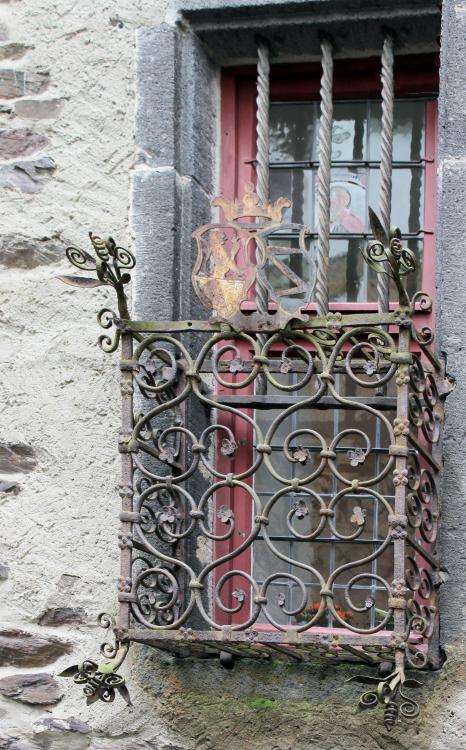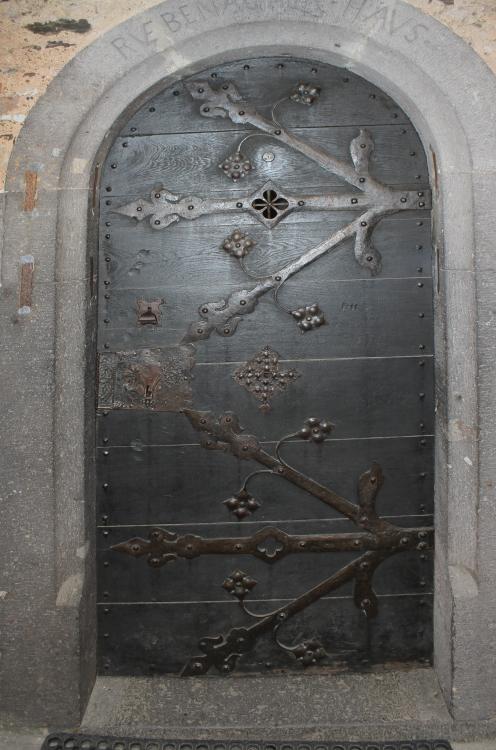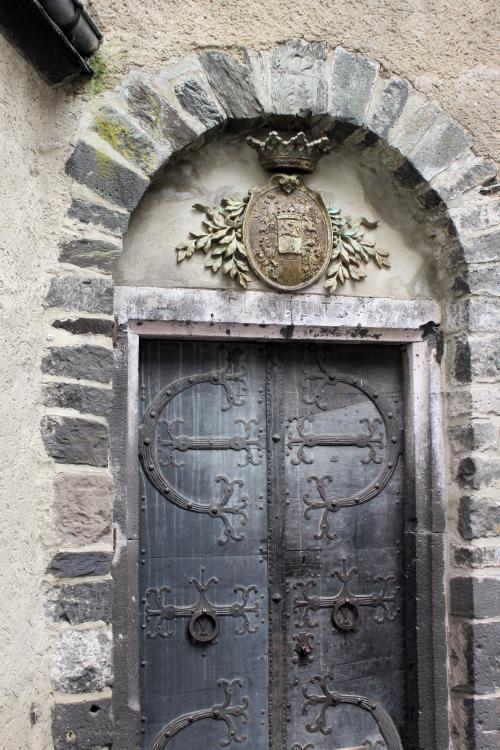
gote
Members-
Posts
779 -
Joined
-
Last visited
Content Type
Profiles
Forums
Articles
Gallery
Downloads
Events
Everything posted by gote
-
Drop it on your toues and you will know
-
Traditional grinding of scythes, knives etc in my corner of the world used to be a sandstone wheel 2-3 feet in diameter hand cranked and running in a through of water. Since you do not want it to throw water all over the place the RPM will be fairly low so even if it were motorized there is no risk that it will fail. I have the parts to one and one day I will set it up but I usually grind edges on my Tormex which is also running water.
-
Ölsupa means "Beer-soup". Not so thick as gruel but more substantial than a consomme It is made from beer thickened with flour, maybe an egg, maybe some milk. It is sweetened with syrup and spiced with ginger and perhaps cinnamon. It is highly controversial just like haggis is. Most people hate it because they have only heard about it. Actually it is quite good as a pickmeup if one comes in hungry from a cold wet and dark November night. It is less fitting between the Russian caviar and the lobster.
-
For some reason I came to think on all those guys wo think there are fixed rules for blacksmithing and remembered this sign in a Copenhagen restaurant: Rule #1 No boose will be served in these premises Rule #2 Except together with fish. Rule #3 All food except "ölsupa" is fish. Rule #4 Should Ölsupa be served, (God forbid) that is fish too.
-
Answer rejected never mind
-
Google Sigurd or Siegfried and you will probably find the tale witch is known in several variations. Wagner used it in an opera. Charles; I think Sigurd would object strongly to be called a partially nude woman. He was THE hero of the times. https://en.wikipedia.org/wiki/Sigurd will tell the tale and explain the carving. it is on a rock-side close to where the bridge was.
-
I tried again to post a pic REFUSED. Google "Sigurdsristningen i Eskilstuna" choose pictures. The pic from pixgallery.com has the smithy in the middle. He has not burnt himself. He has got blood from Fafner on his thumb and when he sucks his thumb the blood gives him the gift to understand the birds that tell him that he must kill his host not to be assassinated by him.
-
No competition probably means no market. Rock star: This guy is not in the US.
-
The Norwegian tongs are just like the tongs in the "Sigurdristning" (Google it I am unable to post a picture.) That also shows a two horned anvil ona thousand years ago. The picture was commissioned by a viking age lady to commemorate a bridge she had let build
-
Most of the advice you have got thus far is very sound but some of it is based on the conditions in the US. Finland/Sweden is different but you can see that yourself. My view on any new venture be it a large corporation starting a new venture or an individual changing his job is as follows: WHY ME? Why am I better on this than the others? A business must have an advantage over the competition in order to be successful. It can be cheap money, control over raw materials, valid patents, idle machinery, you name it. It must be there otherwise the new venture is a waste of money. It must also be uniquely connected with you. An unmined market is open to the competition, Cheap labour also. Excellent marketing staff can be hired by anybody. Also a person must have unique advantages; solid economical background, excellent education, an unused workshop, exceptional skills, exceptional talent, understanding of the market or/and etc etc. If you go for it now, you will, after four years, have a good education, a lousy economy no workshop and no grasp of the market - but if you are aware of the risk and willing to take it, then it is OK. However, you will most probably have to take on electronic work in order to make ends meet. There is also something that is very important for anybody who wants to be successful as an artist or artisan. That is PR, advertising, name and fame. Your success does not depend so much on your skills as on your perceived skills. My last advice: Marry a high-earning woman.
-
Maybe you are referring to the Mästermyr chest that was found in Sweden in the previous century.
-
You might be addicted to blacksmithing if you...
gote replied to divermike's topic in Blacksmithing, General Discussion
Yes I did find them The first three from Eltz then two finials on a modern "Dragon" railing. Ill try again GRRR -
You might be addicted to blacksmithing if you...
gote replied to divermike's topic in Blacksmithing, General Discussion
Have you been to Burg Eltz Thomas. I have a couple of nice pics of hinges but unfortunately not on this computer. -
I have destroyed a fair number of stainless wood screws with phillips heads using a battery screwdriver. I then have to try to get them out wit pliers. Pozidrive seems to be slightly better but I use torx whenever they are available. I agree, a very nice screwdriver
-
The problem area on a brick pier is pull out on he top hinge. A central third hinge will not help there at all because the minute movement needed to make the pintel loose its grip on the brick will not transfer to the middle pintel because of flex in the stile. You will need to make sure the bolts to the upper pintel are quite long. But surely you already know this. By the way, there is a way to distribute the vertical force between pintels and that is to use properly calculated disk springs but it is unlikely to be worth the effort.. I hope that you will post a pic of the finished gate in its proper place. It looks good already.
-
Post drill that followed me home, Can anyone ID it?
gote replied to Big Bill's topic in Drills, Post drills, Mag drills, etc
Look out for roadrunners then -
This is not a stand for working. It is a stand to show off and make us full of envy
-
Tennis Elbow taught me proper hammer technique
gote replied to intrex's topic in Blacksmithing, General Discussion
Maybe you should get what Germans call a "Faulenser" = 'lazy one' - A ring that keeps the reins together. -
I would be happy too. It looks unusually well designed strength-wise. Some vises look as it he post were a spindly afterthought. (and these do bend)
-
It is very difficult to spread the vertical weight evenly unless the pintels are sitting in a soft material so they can flex up and down. The requirement on exactness is overwhelming. This is the reason why a machinery shaft (including crankshafts) is always designed so that one bearing only takes the axial load. If you have a steel gate sitting in a stone post, even the temperature variations between day and night will shift the vertical load between the upper and lower pintel. Since we do not put strain gauges in the pintels we never notice how the load is distributed. The picture of the flexing gate makes no sense to me. If the squareness of the bottom inner corner bends the inner upright outwards, why does not the upper corner bend it inwards so the bend becomes S-shaped. The other corners and bends are just as improbable. It might be possible to design a gate in such a way that the flexing is as depicted but it would be an engineering design feat - I cannot figure out how it could be done. Make yourself a weak frame of wire and try it for yourself and you will see a different pattern of bending. If there is a load on the outer upright, both horizontals will cause a bending moment in the same direction on the inner corners causing a rotation in the same direction (Clockwise in the pic) on both hinges and since one sits above the center of the inner upright and the other below the bending will be S-shaped and there will be no horizontal movement in the center of the upright. Your design is not braced diagonally over the whole gate but it has a fair bracing in each of the three sub-frames so that any bending at all of the inner upright is not very likely and besides "so what?" The design of three sub-frames will cause a similar bending pattern in all three and you do not brace the other uprights against this spurious bending so why brace the inner with a third hinge?
-
Generally speaking: Three hinges need a very good alignment or something must flex. It is difficult enough to get two hinges aligning well. One hinge tends to take all the vertical load and the other is just keeping the door/gate vertical. If you want to take loads on the gate you should space the hinges as much as possible to get a longer arm of momentum. A middle hinge will not contribute much. Even if the alignment is perfect it will only contribute half a much as the other two. The momentum from the load is = Child times the width of the gate. Assuming the vertical support is on the bottom hinge, the momentum is taken up as the horizontal load times the distance between the hinges. Your distance between hinges is twice the with of the gate so the horizontal load on the upper hinge is = Child/2. A central hinge has only half the distance so it contributes only half as much or = Child/3. (1+2=3) However , if the top one is slightly loose it is stressed twice as much as the one on top would have been = Child /1. If in doubt, it is much better to make the hinges, and the pieces they are fixed to, sturdier. Specifically: In your design the middle hinge sits on a vertical bar that is only connected at top and bottom. Any force that is in that hinge will only make the vertical bar flex so the contribution of that hinge is practically nil. The reasoning above refers to a solid gate. I would leave it out since it A: contributes next to nothing B: induces a risk of binding if the three hinges are not perfectly aligned. Even if your work is perfect, the post may be out of line. Nice design by the way. It will look very well when finished I think.
-
Show Me Your Candle Holders
gote replied to Forging Carver's topic in Blacksmithing, General Discussion
Very nice design -
I use square tubing that is slightly oversize and bang it hot down into the hardy hole. The result is a piece that will drop into the hole with a tight fit but can be lifted out (no knocking). The tube is then cut flush with the face of the anvil and welded to the hardy. The good news is that a tube can be driven down with little effort and without risking to pop off the heel of a London pattern anvil. The bad news is that the hardy hole needs to have a very slight taper. I like this method so much that I would taper the hole if there were no taper. By taper I mean 1/1000 or thereabouts. My thinking is that I want the hardy, or whatever tool I use, to be supported by the face of the anvil and located by the hardy hole. I do not want to wedge the tool into the hole.
-
Obviously I was unclear myself. I tried to treat artist's varnish first and the use of linseed oil based tratments for outdoor use on steel afterwards. You are right. I have found a reliable reference. Hardened linseed oil is slightly hygroscopic. Incidently this is the reason for the limited protection when used alone one on steel. The Swedish department of antiquities Riksantikvarieämbetet has issued interesting reports on the subject - in Swedish. Thank you for making me reading it up. However this does not make the varnish a problem for the underlying paint in art work since moisture in itself does not deteriorate the paint. Linseed oil based paints have been used traditionally outdoors on wooden buildings. The main reason for warnishing paintings was not to protect the surface. Artist's paints are heavy on pigment and when the oil hardens the surface may become matte because the oil "sinks in". The warnish will restore the glossy surface Several kinds of pigments deteriorate but rarely from moisture. The gesso is used to prevent the linseed oil from attacking the canvas. (And to give a good surface to paint on) That does not mean that it is impervious to moisture. Animal glue will eventually dissolve in water and lead carbonate will not prevent movement of moisture.
-
It has been used on paintings for a few centuries and nobody noted any deterioration of the underlying paint. What does happen to old paintings is that the warnish becomes grimy and darkens so it makes sense to strip it off - which is a delicate operation done by specialists. I would be interested to see the original research. Organic materials such as canvas and wood used below the paint are much more hygroscopic and permeable to moisture than paint or warnish. The Swedish army told me that "If map and terrain do not agree, Terrain is right." It seems that in this case, the map needs warnishing . Presently lineseed oil is touted by environmentalists to a degree that I think is exaggerated. In test on uncoated steel, pure linseed oil has not been as efficient as modern rust protecting materials. Traditionally it has been used in lead based paints (no longer allowed) to stop rusting. The result depends s lot on the location. relative humidity, possible salt spray from the sea or deicing etc etc. My father used linseed based paints on barn hinges and the like and they are OK half a century later but I do not know which possible inibitors that were used.


